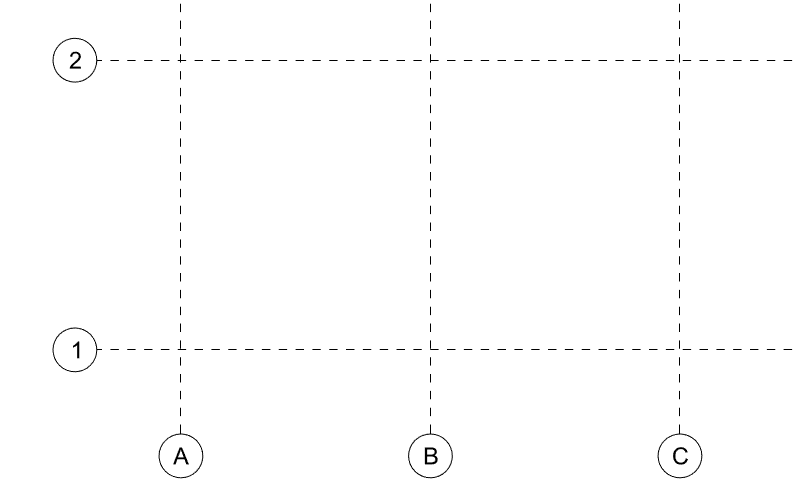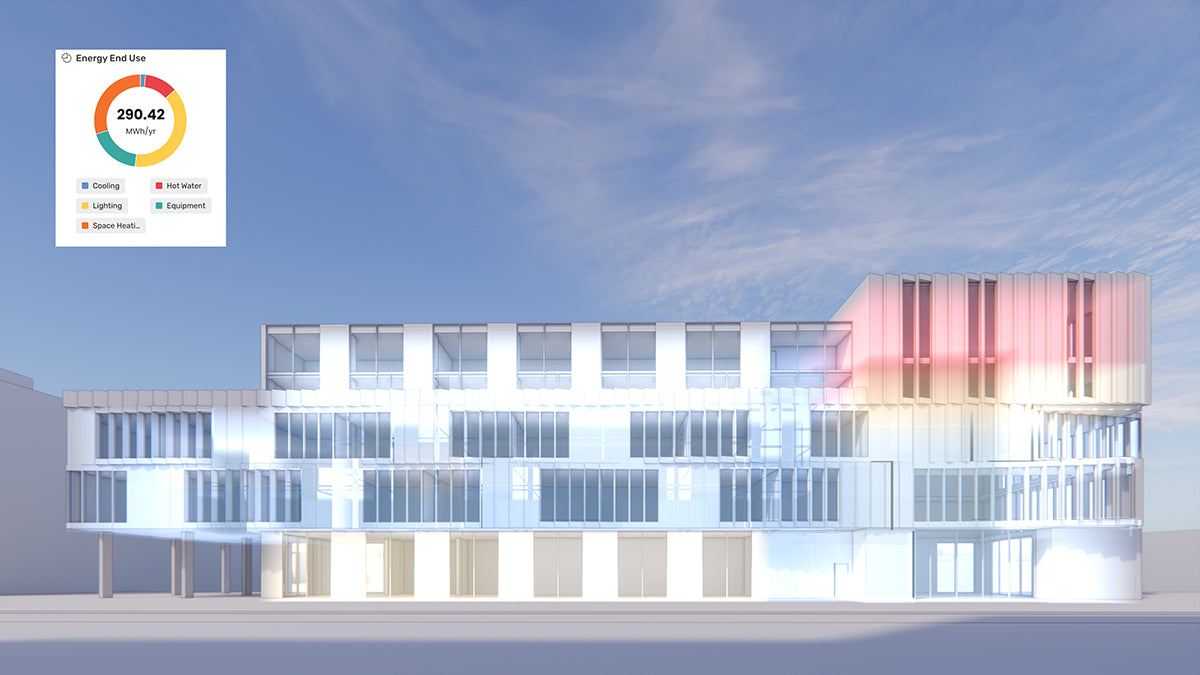Your Cart is Empty
Customer Testimonials
-
"Great customer service. The folks at Novedge were super helpful in navigating a somewhat complicated order including software upgrades and serial numbers in various stages of inactivity. They were friendly and helpful throughout the process.."
Ruben Ruckmark
"Quick & very helpful. We have been using Novedge for years and are very happy with their quick service when we need to make a purchase and excellent support resolving any issues."
Will Woodson
"Scott is the best. He reminds me about subscriptions dates, guides me in the correct direction for updates. He always responds promptly to me. He is literally the reason I continue to work with Novedge and will do so in the future."
Edward Mchugh
"Calvin Lok is “the man”. After my purchase of Sketchup 2021, he called me and provided step-by-step instructions to ease me through difficulties I was having with the setup of my new software."
Mike Borzage
An Interview with Matt Lombard, Author of the SolidWorks 2007 Bible
May 10, 2007 8 min read

Matt Lombard (blog, website) is the author of the recently published "SolidWorks 2007 Bible", a huge volume with over 1,000 pages. His book has quickly become recognized as the reference book of choice for the SolidWorks community (see Rob Rodriguez, Anna Wood, and Jeff Mirisola), of which Matt is a very active and well-known member. He is also a popular blogger of in depth articles, always rich in original content. I thought the publication of his new book would be a great opportunity to get Matt's opinion on a few technical topics. Here is the interview.
Matt, can you tell us a bit about yourself and your professional activities?
I'm an independent contractor/consultant, and focus mainly on complex shapes and plastic parts built in SolidWorks. I do a fair amount of medical product work, but have done things ranging from high heels to hand grenades, radio telescope dishes to fishing accessories. Most of my customers are entrepreneurs who have no CAD software or skills, but I also work on helping folks with SolidWorks specific modeling projects. Sometimes I'm just an additional modeler, and sometimes I get them past a technically difficult hurdle they were not able to achieve on their own.
Beyond the modeling side of my work, I'm also getting more involved in writing. Between the newsgroups and forums, SolidWorks 2007 Bible, some training manuals for SolidWorks Corp, specialized training manuals for individual companies, my blog and some other top secret projects, I'm not sure if I'm an engineer or a writer these days.
Your book “SolidWorks 2007 Bible” has just been published; it includes over 1,000 pages. How you where able to collect and organize such a huge amount of information?
the (SolidWorks) Knowledge Base is a fantastic source of real-world expert answers
The real difficulty was how to condense all of the available information into just 1100 pages. I had to limit it to just base SolidWorks, without any of the add-in packages. I did make a little excursion into Toolbox, which is a source of questions for many users.
Most of the information was initially tackled in smaller chunks originating from user group presentations. I'm very active in the SolidWorks user group community, and do a lot of presentations on a variety of topics. User group presentation topics naturally separate themselves into chapters. The rough outline for a SolidWorks Bible chapter often came straight from the user group presentation Powerpoints, and the details were built in after some research.
Research was a different matter. Most of the existing books on SolidWorks do not have the level of detail needed to help research this new book, so anything currently in print could not be used as a reference. The SolidWorks Help files occasionally offered a useful tidbit. Most of the useful material came from researching on-line forums or the SolidWorks Customer Portal [login required]. The Portal, in particular the Knowledge Base is a fantastic source of real-world expert answers to a lot of practical questions.
Several on-line forums also helped quite a bit. Comp.cad.solidworks is the grand-daddy of them all, since it's about 10 years old now, and a lot of high level users contribute. It's easily searchable through Google Groups. The SolidWorks forums are also a place to browse for answers because the topics are nicely organized. With either one of these, you have to sort through the replies carefully, because the quality of the answer is not guaranteed, and posts are often incorrect.
Last but not least is good old just cracking open the software and using it. Everything had to be verified this way anyway, but testing on some topics took a lot of time. For example, to figure out what the Geometry Pattern option does in patterns was tough. It turns out that the Help file is wrong and incomplete. I set up a test with some different patterns and some different settings. Results are spelled out in the book.
Let’s envision a sort of ideal CAD world, where there are easy to use CAD systems, perfect product documentation, and trained users. In such a world, do we still need books like yours?
That depends. There are two ways "ideal CAD" can go. It could go the direction where specialists are no longer needed. The software is so dumbed down that anyone can use it to its fullest extent. I think a lot of CAD software is currently pushing in this direction. The further the CAD world goes in this direction, the less we need books about technique.
great results require skills which are not possessed by just any computer operator
The other possibility is that people recognize that great results require skills which are not possessed by just any computer operator and cannot be simulated by even the most advanced software. For software where success depends on operator skills, there will always be a place for a book on techniques. The best software Help files generally only cover the "button push" type of information. "If I push this button, what happens?" Frankly, I'd like to avoid that kind of information in my book, but because most of the Help in SolidWorks isn't up to that ideal, I had to include a lot of it. The real value of higher level books is to offer a different point of view. As long as individual skills can make a contribution, there will be more than one way of doing things, and so we can learn from one another. Different techniques and styles differentiate users and their products from one another.
In an ideal CAD world, my book would still exist, but look a little different. It would focus more on the techniques, strategies and best practice, and less on the button pushes.
On CAD blogs the topic of 2D vs. 3D keeps appearing and generating a lot of discussion. Why are 3D CAD systems taking so long to replace 2D CAD systems?
I think it comes down to economics. If an industry is going to save a lot of money by switching to 3D, they have probably already switched. There are probably very few pockets left in industry where great savings are being left on the table due to factors such as CAD users simply not adopting the new technology. Management would force the change if there were substantial savings to be seen.
I don't think we will ever see a time when 2D completely disappears. When you are creating a concept, even on a 3D system, what is the first thing you do? Draw it on a piece of paper. That's 2D. That isn't going to go away. They may find an electronic way to replace paper, but flattening things into 2D is a great way to simplify an idea, and allows you to quickly describe shapes that you simply can't make without a lot of detail work in a 3D system.
No matter what the proponents of 3D CAD systems say, design happens in your head, not on the screen. All you can do on the screen is try to document what's in your head. Parametric feature-based systems make this difficult. Sketchup and Rhino make this easier.
Parametric 3D modeling as well as feature-based modeling are now considered fully mature technologies. What are the areas where those technologies can and should improve in order to fully empower the end-user?
parametrics as a technology is not all there is when it comes to modeling
Parametrics as a technology is not all there is when it comes to modeling. I think there is a lot that can be done in terms of interface (how the user interacts with the geometry creation engine) and implementation (internal technical details of how it works) before we have exhausted the possibilities with parametrics. One of the big problems is in parametric features losing track of referenced geometry through changes, which I see as an implementation problem. Most of the really basic problems for users come from interface problems, for example, in SolidWorks you have an unexplainable difference between curves and sketches, and places where sketches cannot be used, or curves cannot be used, and no good reason at all for distinguishing between the two types. This is an interface problem.
Sometimes you hear about people asking about alternatives to NURBS and the BREP. T-splines is an interesting approach which adds a layer on top of the NURBS geometry spanning the patches, but maybe it would be best to combine NURBS and T-splines into a single native type, eliminating the tyrannical rule of the four-sided patch, and enabling curves to end in the middle of a patch rather than only at an edge. I think there is some exploring to be done in this direction. FreeDesign's FreeDimension software is trying to lower the bar with NSS (N sided surface) technology so that you aren't restricted by the four-sided patch, and you don't have to be a specialist to do surfacing work.
The rate of change is going to be slow without some sort of an economic driver. Maybe a new venture meant to compete with AliasStudio and ICEM in the mid-range is what is needed to shake things up. That would be all about lowering the specialization bar, which is where CAD mass marketing is taking us right now.
Are parametrics necessarily married to history based modelers? History based modeling introduces a lot of logic-based problems with creating a model, but parametrics help you drive a model with "design intent". I don't know if these concepts can be pulled apart, or if things would improve if they were pulled apart.
Recently we have seen new approaches to 3D modeling appearing on the market. In the parametric feature-based system most of the relationships and the intelligence to handle them are in the data structure, while for the new CAD system almost everything is in the editing algorithms. Do you agree with this simplified analysis? What is your opinion about these new technologies?
the first advice to an AutoCAD user learning SolidWorks was to forget everything he knew about CAD
I assume you are talking about modelers such as Sketchup and SpaceClaim. This returns to my earlier point about specialization. Sketchup is completely the ultimate in non-specialist CAD. The most obvious way in which Sketchup differs from parametric modelers is how the user interacts with the geometry. It's an implementation difference that looks like an interface difference.
SpaceClaim enables direct editing of NURBS data, without messing with feature definition or history. Again, you are still using NURBS technology, but you are editing it directly by dragging handles rather than by changing parameters in dialog boxes. This is being marketed as a non-specialist tool. I think the real question here is not about if the technology is good or bad, but about how it should be used. Sure, you can have a machinist change a plastic part model before making the mold for it, but is that really a good idea? It depends on the change, to be sure. I think this opens a big "best practice" can of worms for design and manufacturing departments.
On the other hand, I think it is also a bad idea for the skilled designer to use a product like SpaceClaim to edit a model if he has access to the parametric model. If he doesn't have access to the parametric model, editing with SpaceClaim is a good alternative to remodeling the part in a parametric system to make changes.
How often will SpaceClaim be used to build production models from the ground up? I guess that depends on an expanded toolset in SpaceClaim, from what I've seen. In its current state, it lacks a few tools.
In the end, SpaceClaim is a "back to the future" kind of application, dumping the process orientation of parametrics, but supplanting it with the ease of direct NURBS editing, with some slick tools to make NURBS react like parametric features when needed.
The transition from 2D to 3D has important implications for the organization of a design team. These changes are even more important when the 3D CAD system is parametric and feature-based. What are your main recommendations for a company starting this transition?
I worked at a SolidWorks reseller for several years, and the first bit of advice to an AutoCAD user learning SolidWorks was to forget everything he thought he knew about "CAD". SolidWorks is not a "drafting" program, it is a "digital prototyper", much more akin to building a physical model by hand than making a 2D drawing.
I would like to thank Matt Lombard for taking the time to speak with me today. If you have any questions for Matt or for Novedge, please leave a comment below and we will be glad to answer.
Franco Folini
Also in NOVEDGE Blog

Maximize Your Architectural Workflow with VisualARQ 3's New Guides Feature
January 30, 2025 5 min read
Read More
Introducing V-Ray 7: Transforming Creative Workflows in Maya and Houdini
January 28, 2025 7 min read
Read More
How the AEC Industry Shifted Towards Essential Sustainable Building Design
August 15, 2024 4 min read
Explore sustainable building design strategies at NOVEDGE, focusing on eco-friendly practices for resilient and efficient structures.
Read MoreSubscribe
Sign up to get the latest on sales, new releases and more …


